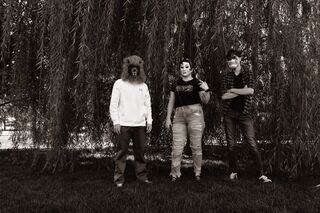Fear
3 Key Traits of Morbidly Curious People
Social rebels with less fear of death.
Posted October 13, 2021 Reviewed by Gary Drevitch
Key points
- Social rebels are more likely to express morbid curiosity.
- Morbidly curious people are less likely to be afraid of topics related to death.
- Morbidly curious people are more interested in human behavior.

Morbid curiosity is something most people have felt at one time or another. It’s that feeling of not wanting to look, but not being able to look away, at something that is threatening or disgusting.
Over 2,000 years ago, Plato gave us a clear example of morbid curiosity in the story of a man named Leontius. One day, Leontius was walking near the city walls when he caught a glimpse of a pile of dead bodies with an executioner standing over them. Leontius felt an overwhelming desire to look at the bodies while simultaneously loathing the thought of them. After some time, Leontius’s desires overcame him and he rushed up to the bodies, exclaiming, “There! You wretches! Gaze your fill at the beautiful spectacle!”
Leontius’s actions don’t come off as surprising to most people. After all, if you came across those bodies with the executioner standing over them, would you have trouble looking away? My bet is you would.
However, some of you would be more likely to look and would stare for longer. Your degree of morbid curiosity is a key factor in how likely you would be to look. But what kinds of people are more likely to be morbidly curious? My research shows that there are at least three key factors that influence morbid curiosity.1
1. Rebellious Nonconformity
Social rebels score high in something called rebellious nonconformity, which refers to a tendency to disregard social norms. Social rebels have little care for a traditional lifestyle and prefer some unpredictability in their lives. The flaunting of social norms makes this trait ripe for encouraging morbidly curious behavior since most topics that inspire morbid curiosity are often discouraged by cultural norms.
Despite their popularity in entertainment, it is typically a violation of social norms to express interest in or curiosity about topics such as violence, serial killers, body violations, or the paranormal. Of course, this depends greatly on specific cultural values. In a culture where those topics are not so taboo, social rebels may be less likely to be morbidly curious. However, in the U.S. and much of Europe, social rebelliousness is a strong predictor of morbid curiosity.
2. Animal Reminder Disgust
Animal reminder disgust is a domain of disgust that is triggered by dead bodies and reminders of death. According to Paul Rozin and his colleagues, this domain relates to reminders of the animal origins of humans.2 It is hypothesized that this domain of disgust functions to protect humans from their fear of death and the threat of contamination from bodily fluids.
However, recent research suggests that humans aren’t so disgusted by reminders of their animal nature if those reminders are pleasant.3 In other words, the core of animal reminder disgust might be more about death and body violations than about being reminded that we are animals. In my research, I find that people who are high in morbid curiosity tend to be low in animal reminder disgust. That is, morbidly curious people are less likely to fear various aspects of life that relate to death and feel less disgusted by violations of the body.
3. Overt Social Curiosity
In work showing that curiosity can be categorized across five dimensions, Todd Kashdan and his colleagues have identified social curiosity as a key domain of curiosity. Social curiosity can be split into two types: overt and covert.4 While overt curiosity refers to an interest in the behavior of others, covert curiosity is more akin to gossip or eavesdropping.
One of the four dimensions of morbid curiosity that I have identified in my research is of the minds of dangerous people. The core of this dimension is a curiosity about the motives and behaviors of dangerous people. Still, the other dimensions are concerned with behaviors in many ways. For example, the interpersonal violence dimension of morbid curiosity is concerned with violent behaviors. It is unsurprising, then, that people who score high in overt social curiosity are also more likely to be morbidly curious.

Takeaway
Morbidly curious people are social rebels who are interested in human behavior and don’t fear topics related to death.
While these three traits don’t explain all of the variation in morbid curiosity, they do strongly influence how morbidly curious someone is. If you aren’t concerned with social norms, don’t fear death, aren’t too disgusted by body violations, and are curious about the behavior of others, odds are you are morbidly curious. If you want to check for yourself, you can take our morbid curiosity test and see how you compare to the average person.
Facebook/LinkedIn image: Keycreative_AW/Shutterstock
References




